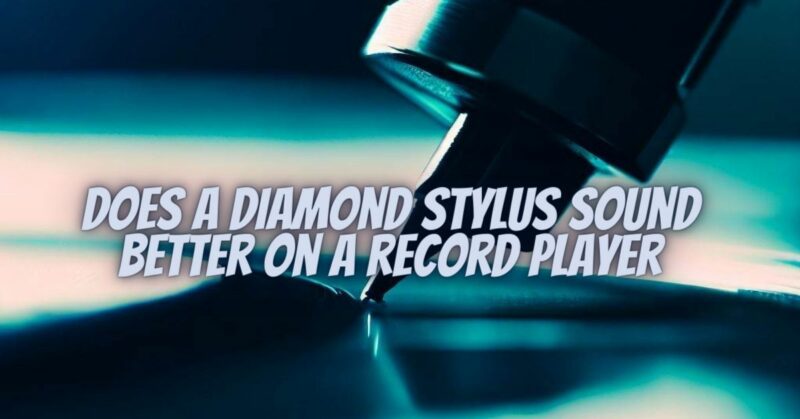The vinyl record player experience is often seen as a journey filled with nuances, preferences, and choices. Among the many components that contribute to the magic of vinyl playback, the stylus or needle plays a pivotal role. In this article, we will explore the relationship between the diamond stylus and sound quality and how this combination impacts the overall record player experience.
The Stylus as the Bridge to Sound
Before delving into the specifics of the diamond stylus, it’s crucial to understand the stylus’s role in vinyl playback. The stylus, a small and often diamond-tipped component, is responsible for translating the physical grooves on a vinyl record into electrical signals. These signals are then amplified and converted into the rich, analog sound that vinyl enthusiasts cherish.
Diamond Stylus: An Audiophile’s Choice
The diamond stylus is favored by many audiophiles for several compelling reasons:
- Durability: Diamond is one of the hardest known materials, making it exceptionally durable. This hardness allows diamond-tipped styli to withstand the mechanical stresses of tracking vinyl grooves for extended periods without significant wear.
- Precise Tracking: The hardness and sharpness of a diamond stylus allow for precise tracking of the record grooves. This precision results in superior sound quality, particularly in reproducing high-frequency details and complex musical passages.
- Reduced Record Wear: Due to its hardness and precise tracking ability, a diamond stylus exerts minimal pressure on the groove walls. This means less wear and tear on your valuable vinyl records, preserving their longevity and sound quality.
- Clarity and Fidelity: The accurate tracking of a diamond stylus contributes to clarity and fidelity in sound reproduction. It can capture the subtle nuances, harmonics, and spatial information present in the original recording.
Sound Quality: Beyond the Stylus Material
While the diamond stylus offers undeniable advantages, it’s important to recognize that sound quality in vinyl playback is a multifaceted affair. The stylus material is just one piece of the puzzle. Other factors include:
- Stylus Shape: The shape of the stylus tip (e.g., conical, elliptical, microline) plays a critical role in sound quality. An advanced stylus shape, combined with diamond material, can enhance the listening experience significantly.
- Cartridge Quality: The quality of the cartridge that houses the stylus also affects sound quality. High-end cartridges are designed to optimize tracking and resonance control.
- Turntable Setup: Proper turntable setup, including tonearm alignment, tracking force adjustment, and anti-skating settings, is crucial for optimal sound quality.
- Record Condition: The condition of your vinyl records, including cleanliness and lack of wear and damage, impacts sound quality. Well-maintained records yield better results.
- Audio System: The quality of your amplification, speakers, and overall audio system plays a substantial role in the final sound quality.
The diamond stylus is indeed a remarkable component that can elevate the sound quality and longevity of your vinyl records. Its durability, precision, and ability to capture high-frequency details make it a favorite among audiophiles. However, it’s essential to remember that sound quality in vinyl playback is a holistic experience. While the diamond stylus is a significant contributor, other factors such as stylus shape, cartridge quality, turntable setup, record condition, and your audio system all play crucial roles. The true magic of the record player experience lies in the harmonious interplay of these components, resulting in the rich, analog sound that continues to captivate vinyl enthusiasts worldwide.


